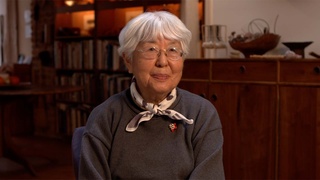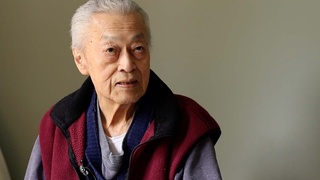Entrevistas
Animosity between the Hawaiians and the mainlanders
You probably may have heard of some of the animosity between the Hawaiians and the mainlanders. This conflict persisted for a long…even after the war.
Every night the Hawaiians, especially, would like to go to the PX, have beer – ten cents a bottle. Right after lights out, I think it was ten o’clock, we were in our hut, I heard a large commotion outside the door. A drunk Hawaiian came barging in, into our hut – we were all in our beds – and they started beating up my friend “Yuk” Minaga, who’s from Utah, and he was my radio man in forward observer crew. And they jumped on him and started pounding him. So I jumped up and I tried to pull off the guy that was on top pounding him. And someone else, maybe it was two, choked me and pulled me down and started beating me up too. All the while, nobody else got up, nobody could…I’m sure nobody could sleep through this ruckus – it was a small room with cots side-by-side. And they beat us up, but not to the point where we had to go to the infirmary.
And the next day, the captain came to us and said, “You know, they found the fellows that beat you up last night.” The question came, “Do you want to press charges against these guys?” After just a few minutes, it didn’t take us very long, we said, “Well why don’t we drop this completely and take it out on the Germans.” And we shook hands, and that was it. It was not even on our records. I think that was our good move that we made.
Fecha: January 3, 2015
Zona: California, US
Entrevista: Lily Anne Y. Welty Tamai
País: Watase Media Arts Center, Japanese American National Museum
Explore More Videos

Jugar baloncesto en el ejército.
(n. 1938) Japonés peruano encarcelado en Crystal City

Trabajar como mecanógrafa en el ejército.
(n. 1938) Japonés peruano encarcelado en Crystal City

Grandfather loved to tell her stories of her great-grandfather Arakaki
Okinawense estadounidense cuyos padres son de Perú.

Prosecution of Japanese Peruvians during the war
Okinawense estadounidense cuyos padres son de Perú.



The Emotional Toll of Being Incarcerated in Camp during World War II
(b. 1932) Actriz de teatro, cine y televisión nisei americana

Sister’s Trauma from being Incarcerated during World War II
(b. 1932) Actriz de teatro, cine y televisión nisei americana

FBI agents came to the house while parents were gone
(n. 1923) Kibei Nisei poeta, activista

Mother was ordered to speak English during FBI house search
(n. 1923) Kibei Nisei poeta, activista

School held emergency drills at the start of World War II
(1934–2018) Diseñador japonés americano, educador y pionero de tecnologías mediáticas

Father lost everything during World War II
(1934–2018) Diseñador japonés americano, educador y pionero de tecnologías mediáticas

His family Traveled to Japan in 1940
(n. 1938) Japonés estadounidense. Sobreviviente de la bomba atómica de Hiroshima

His Memory of August 6, 1945
(n. 1938) Japonés estadounidense. Sobreviviente de la bomba atómica de Hiroshima

Escape from Hiroshima
(n. 1938) Japonés estadounidense. Sobreviviente de la bomba atómica de Hiroshima
